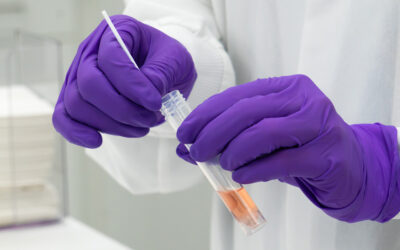By Marylou G. Gibson, Ph.D
Adapted from a post that originally appeared on LinkedIn.
Positive controls are the gold standard in every experiment; we learned that in high school lab. A positive control sample included in your test shows you and your client that the test as performed can detect the analyte you are searching for. Without a positive control, how else would you know if your assay is working as intended and is able to detect the same level of analyte day after day, time after time? Good experimental design includes a positive control whose signal serves as an indicator of acceptability of the assay.
There are lots of reasons analysts give for not running a positive control in their daily work. Common reasons include:
- “A positive control is expensive and takes up valuable space in my assay.”
- “I might contaminate my negative control with positive control, and I’ll have to repeat my assay”
- “I have too many samples to run already and one of my test samples will be positive anyway.”
- “I’ve done this assay so many times that I know it’s working well.”
- “If I run a control and it does not pass, I will have to perform remedial action and documentation.”
A positive control may add expense to your testing, but it gives you confidence in your results. Proper sample manipulation and environment control should eliminate cross contamination issues. If you can’t include a positive sample in every run, try to include one every few runs to assess the consistency and accuracy of your test. I have been doing this for 30 years and I still need a positive control to make me confident in my assay. In some emergency instances the expense and the space argument might be valid for a brief amount of time, but getting back to running regular controls can make the difference between doubtful and acceptable results.
Here is why regular use of a standardized positive control is necessary:
- Subtle changes in a test instrument or liquid dispenser over time can minutely affect volumes and concentrations of final reactions. Tubing can develop minute clogs or bubbles at junctions. Precise liquid handlers will shift and need calibration on a regular basis.
- Complicated high and moderate complexity assay have many steps including extractions, dilutions and multiple pipetting steps that are error prone.
- Different operators can perform an assay in subtly different ways that cannot be captured in an SOP. Things like the time it takes to handle the reactions or pipetting techniques all can affect the assay outcome. The best way to control the results of two operators is with a positive control.
- The age and handling of the reagents can affect the values obtained in the assay. Reagents age over time yet we possibly use the same tube for weeks, storing it in the refrigerator between assays. We have all experienced a reagent like an enzyme that loses potency over time. Taking it in and out of the refrigerator can affect its potency. Every time you open a tube, some vapor evaporates, changing the concentration of the component.
So many things can change an assay ever so slightly. It is best to be aware as your assay varies and proactively assess the causes. Inclusion of a positive control give you awareness of how your assay is performing and changing over time. Constant monitoring will keep your assay within the tolerance levels specified in your QC Program.
If your assay is lab-developed or a modification of a manufacturer’s method, the laboratory must evaluate instrument and reagent stability and operator variance at some regular interval and determine what variability is acceptable. The only way to get this data week after week is with a standardized control whose value is verified by a third party.
In the United States, CLIA’88 specifies the performance of quality control for Moderate and High Complexity Assays. Control materials provide a means to indirectly assess accuracy and precision of patient test results (CLIA §493.1201). CLIA and COLA regulated labs must establish and follow “written QC procedures for monitoring and evaluating the quality of the analytical testing process of each method to assure the accuracy and reliability of patient test results and reports.” These procedures must be performed on a routine basis to monitor the stability of each test method. Your laboratory will have its own criteria for acceptability of a test which will include checking the positive control result. The test must be acceptable before patient results can be reported.
A positive control is one important component that will give you confidence in your test results. Microbiologics can help you to find the right positive control for your diagnostic clinical assays. We can help you meet the Quality criteria your organization has set for your testing every time.






This is a really nice blog and I like this
I have read this complete blog, this was very informative for me.